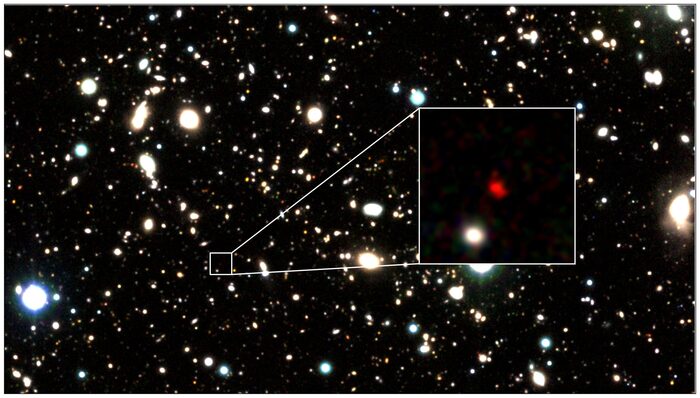The most distant astronomical object in the Universe has been identified: it is about 13.5 billion light years from us and is a galaxy, called Hd1.
Born only 300 million years after the Big Bang, it could host the most ancient stars in the cosmos or a black hole with a mass equal to 100 million times that of the Sun. The discovery is published in Astrophysical Journal and Monthly Notices of the Royal Astronomical Society Letters by an international group of astronomers from the Harvard & Smithsonian Center for Astrophysics, including the Italian Fabio Pacucci. observation with the contribution of three terrestrial telescopes and one in space: the Japanese Subaru and the British Ukirt in Hawaii, the
"It is difficult to answer questions about the nature of such a distant object", Fabio Pacucci explains on MediaInaf.
"It is like trying to guess the nationality of a boat by observing the flag flying while we are on the ground and the ship in the middle of a storm and under a thick fog".
The galaxy Hd1 appears very bright in ultraviolet light: this means that strong energetic processes are in progress.
Astronomers initially assumed it was a starbust galaxy, a galaxy that creates stars at a high rate, but after calculating how many stars Hd1 was producing, they got "an incredible rate: Hd1 should have formed more than 100 stars every year. . It is at least 10 times higher than what we expect for these galaxies ", emphasizes Pascucci.
This is how researchers began to think that Hd1 could form particular stars.
"The first stars of the Universe were more massive, brighter and warmer than the more modern ones", explains the astronomer.
"If we assume that the stars that form in Hd1 are the first,
However, even a supermassive black hole could explain the extreme luminosity of Hd1: if so, it would be the first supermassive black hole known to humanity, observed much closer in time to the Big Bang than the current holder of the record.
"HD1 would represent a giant baby in the delivery room of the early universe," says Avi Loeb, an astronomer at the Center for Astrophysics Harvard & Smithsonian.







